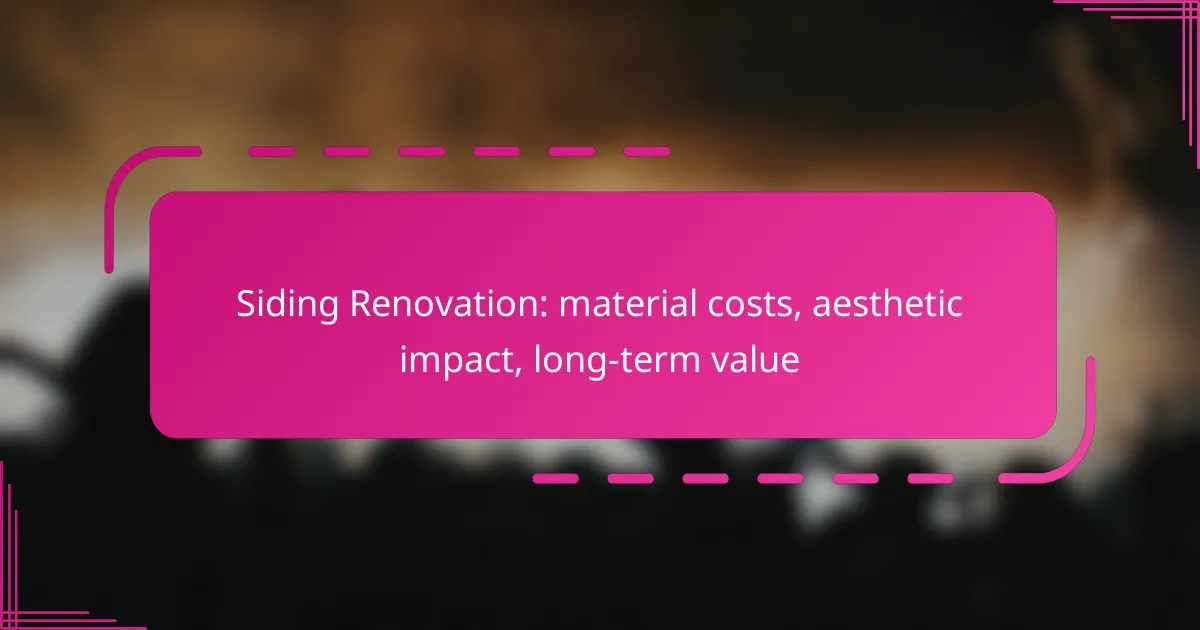Siding renovation is a crucial aspect of home improvement that can enhance both the aesthetic appeal and long-term value of a property. With various materials available, such as vinyl, fiber cement, wood, metal, and stucco, homeowners must carefully consider the costs, visual impact, and durability of each option. Understanding these factors can lead to a more informed decision that aligns with both budget and design preferences.
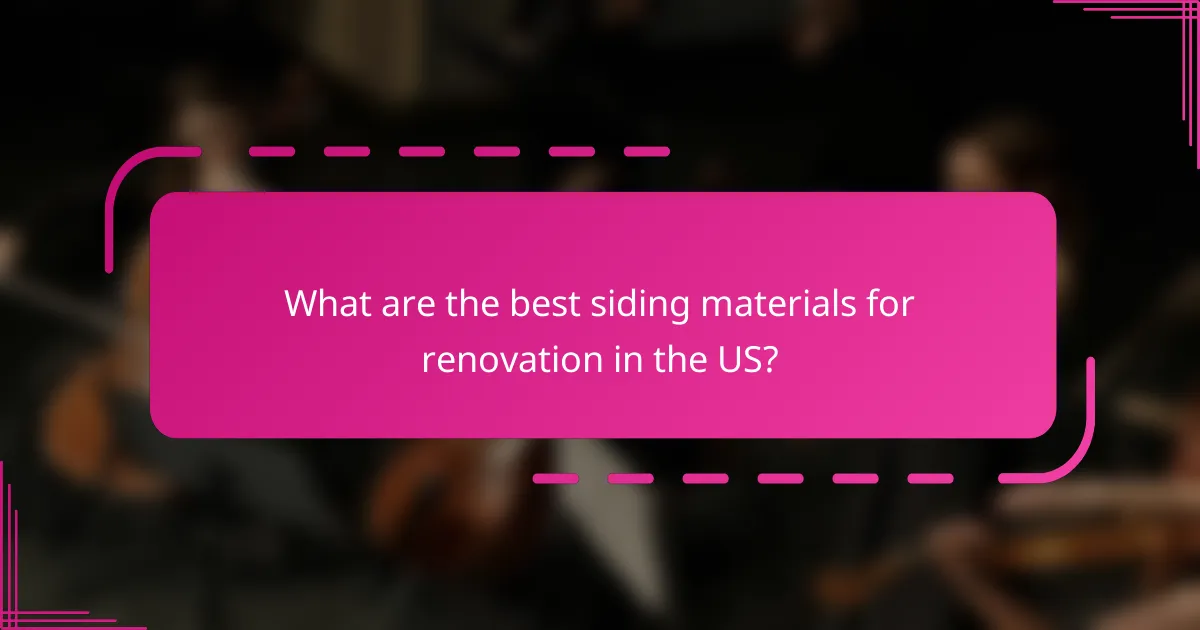
What are the best siding materials for renovation in the US?
The best siding materials for renovation in the US include vinyl, fiber cement, wood, metal, and stucco. Each material offers unique benefits and considerations regarding cost, aesthetics, and long-term value.
Vinyl siding
Vinyl siding is a popular choice for its affordability and low maintenance requirements. It typically costs between $2 to $7 per square foot, making it an economical option for homeowners.
This material is available in various colors and styles, allowing for a customizable look. However, it can fade over time and may not provide the same insulation as other materials.
Fiber cement siding
Fiber cement siding is known for its durability and resistance to pests and weather. Prices generally range from $5 to $10 per square foot, reflecting its higher quality and longevity.
This material can mimic the appearance of wood or stucco, providing aesthetic flexibility. It requires periodic painting but offers excellent fire resistance and can last for decades with proper care.
Wood siding
Wood siding offers a classic, natural look that many homeowners appreciate. Costs can vary widely, typically between $3 to $10 per square foot, depending on the type of wood used.
While wood siding can be beautiful, it requires regular maintenance, including painting or staining, to prevent rot and insect damage. It’s essential to consider local climate conditions when choosing wood siding.
Metal siding
Metal siding, often made from aluminum or steel, is valued for its strength and modern appearance. Prices usually range from $3 to $8 per square foot, depending on the material and finish.
This siding is resistant to fire, pests, and rot, making it a durable option. However, it can be prone to dents and may require repainting over time to maintain its aesthetic appeal.
Stucco siding
Stucco siding is a cement-based material that provides a distinctive look and excellent insulation. Costs typically range from $6 to $9 per square foot, reflecting its labor-intensive installation process.
Stucco is highly durable and can withstand harsh weather conditions, but it may crack over time if not properly installed. Regular maintenance, including sealing, can help extend its lifespan.
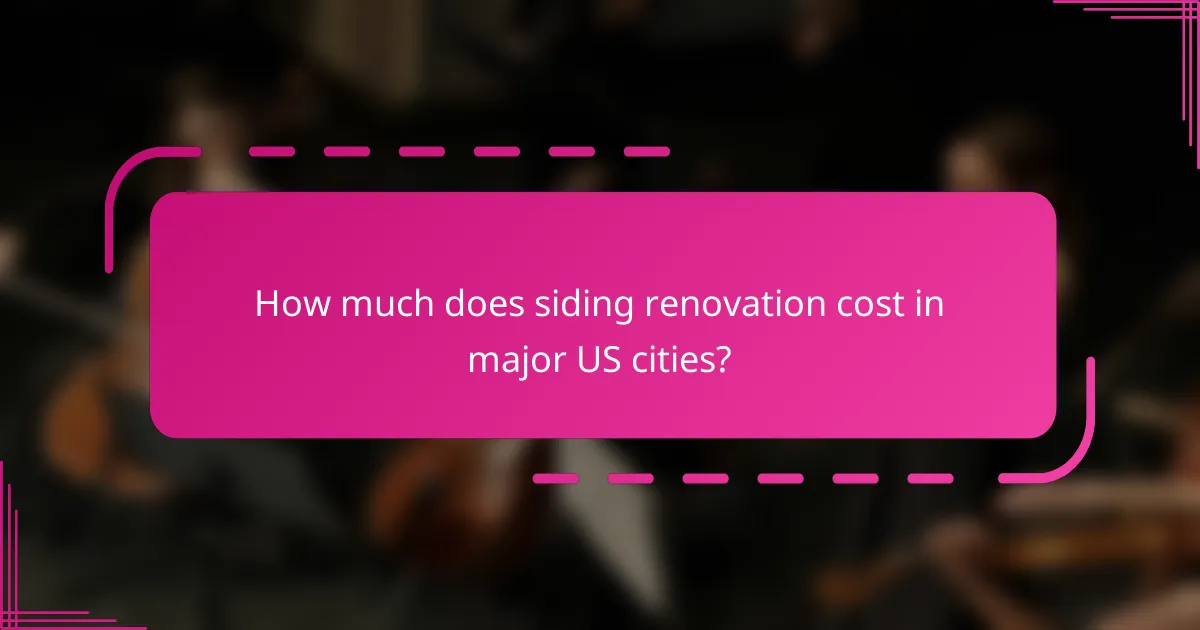
How much does siding renovation cost in major US cities?
The cost of siding renovation varies significantly across major US cities, influenced by material choice, labor rates, and local market conditions. Homeowners should expect to spend anywhere from low thousands to high tens of thousands of dollars, depending on the selected siding type and the extent of the renovation.
Cost of vinyl siding in New York
In New York, the cost of vinyl siding typically ranges from $3 to $8 per square foot, including installation. This price can vary based on the quality of the vinyl and the complexity of the installation.
Homeowners should consider that while vinyl siding is generally more affordable, it may not provide the same aesthetic appeal or durability as other materials. However, its low maintenance requirements and energy efficiency can make it a practical choice for many.
Cost of fiber cement siding in Los Angeles
Fiber cement siding in Los Angeles usually costs between $6 and $12 per square foot, including labor. This material is known for its durability and resistance to fire and pests, making it a popular option in areas prone to wildfires.
Investing in fiber cement siding can enhance a home’s curb appeal and long-term value. However, it is heavier and may require more skilled labor for installation, which can increase overall costs.
Cost of wood siding in Chicago
In Chicago, wood siding costs can range from $5 to $10 per square foot, depending on the type of wood and the intricacy of the installation. While wood offers a classic aesthetic and excellent insulation properties, it requires regular maintenance to prevent rot and insect damage.
Homeowners should weigh the initial costs against long-term upkeep when considering wood siding. Proper sealing and painting can extend the lifespan of wood siding, but neglecting maintenance can lead to higher costs over time.
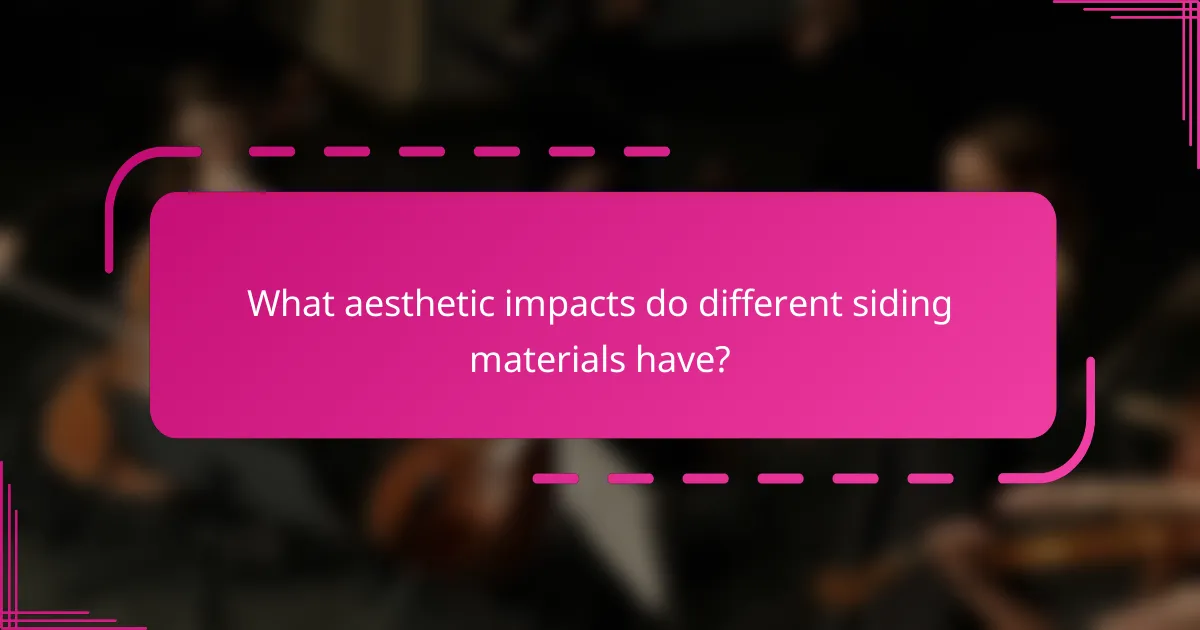
What aesthetic impacts do different siding materials have?
Different siding materials can significantly influence the overall appearance of a home, affecting its curb appeal and market value. Choices like vinyl, fiber cement, and wood each bring unique visual characteristics and maintenance considerations that homeowners should evaluate.
Vinyl siding aesthetics
Vinyl siding is known for its versatility and wide range of colors and styles, allowing homeowners to achieve various looks, from traditional to modern. It can mimic the appearance of wood or other materials while remaining low-maintenance.
However, the aesthetic impact can vary based on quality; higher-grade vinyl often features richer colors and textures. It’s important to choose a style that complements the architectural design of your home to enhance visual appeal.
Fiber cement siding aesthetics
Fiber cement siding offers a more sophisticated look, resembling wood or stucco, and is available in various textures and finishes. Its durability against weathering means it retains its appearance longer than some other materials.
This type of siding can be painted in any color, providing flexibility in design. Homeowners should consider the initial investment, as fiber cement can be pricier than vinyl but often results in a more upscale aesthetic.
Wood siding aesthetics
Wood siding is celebrated for its natural beauty and warmth, providing a classic and timeless look. It can be stained or painted in numerous colors, allowing for customization to match personal style and home design.
However, wood requires regular maintenance to prevent rot and insect damage, which can impact its long-term aesthetic appeal. When well-maintained, wood siding can significantly enhance a home’s charm and value, making it a popular choice for many homeowners.

What is the long-term value of siding renovation?
The long-term value of siding renovation lies in its ability to enhance a home’s aesthetic appeal, improve energy efficiency, and increase property value. Investing in quality siding materials can yield significant returns when selling a home, making it a worthwhile consideration for homeowners.
Return on investment for vinyl siding
Vinyl siding typically offers a strong return on investment (ROI), often ranging from 70% to 80% when homeowners sell their property. Its affordability and low maintenance requirements make it an attractive option for many. Additionally, the variety of colors and styles available allows for customization that can further enhance curb appeal.
When considering vinyl siding, it’s essential to factor in installation costs, which can vary based on the complexity of the project and local labor rates. Homeowners should also look for high-quality vinyl products that resist fading and damage for the best long-term results.
Durability of fiber cement siding
Fiber cement siding is known for its exceptional durability, often lasting over 30 years with proper maintenance. It is resistant to rot, fire, and pests, making it a reliable choice for various climates. This longevity can translate into lower replacement costs over time, enhancing its overall value.
However, the initial investment for fiber cement siding is typically higher than that of vinyl. Homeowners should weigh the upfront costs against the long-term savings in maintenance and replacement to determine if it aligns with their budget and goals.
Maintenance costs of wood siding
Wood siding can provide a classic aesthetic but often incurs higher maintenance costs compared to other materials. Regular treatments, such as painting or staining, are necessary to protect against weather damage and pests, which can add up over time. Homeowners should expect to spend a few hundred to several thousand dollars on maintenance every few years, depending on the type of wood and local climate conditions.
When choosing wood siding, consider the long-term commitment to upkeep. While it may offer a unique charm, the ongoing costs and labor involved in maintaining wood siding can impact its overall value compared to more durable materials like vinyl or fiber cement.
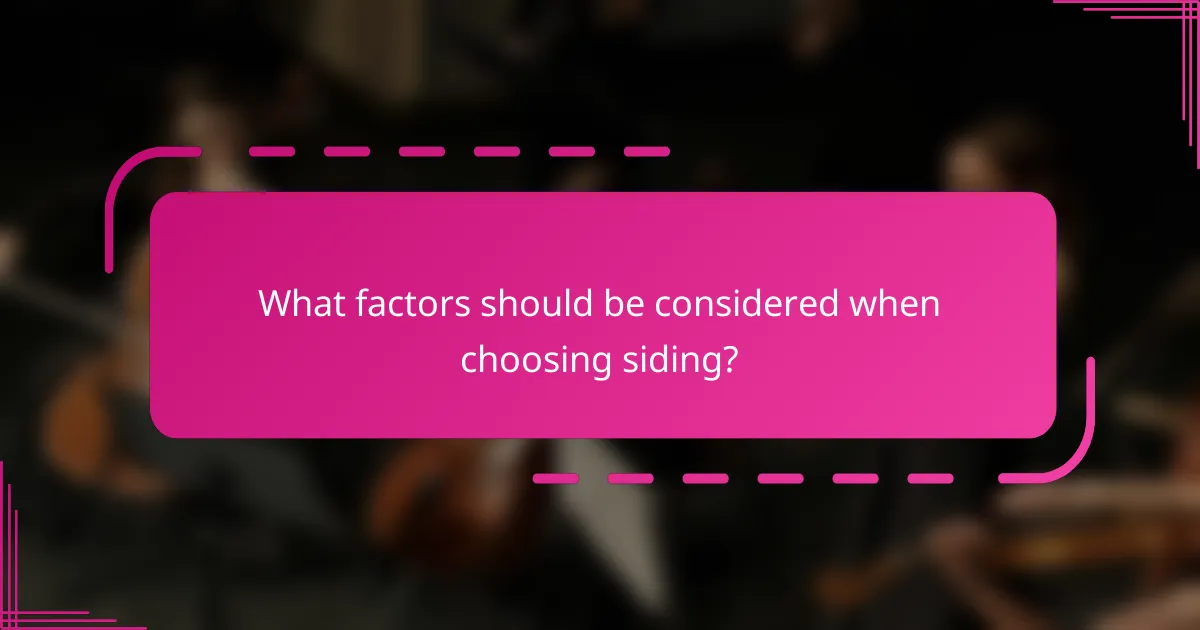
What factors should be considered when choosing siding?
When selecting siding, consider factors such as climate, home style, material costs, and long-term value. These elements significantly influence both the aesthetic appeal and durability of your home’s exterior.
Climate considerations
Your local climate plays a crucial role in siding selection. For instance, areas with heavy rainfall may benefit from materials like vinyl or fiber cement, which resist moisture and mold. Conversely, regions with extreme temperatures might require insulation properties, making insulated siding options more appealing.
Additionally, consider the wind resistance of siding materials, especially in hurricane-prone areas. Products rated for high wind resistance can prevent damage and reduce repair costs over time.
Home style compatibility
The siding you choose should complement your home’s architectural style. Traditional homes often look best with wood or brick siding, while modern designs may benefit from sleek materials like metal or fiber cement. Matching the siding to your home’s character enhances curb appeal and can increase property value.
Furthermore, consider the color and texture of the siding. Lighter colors can reflect heat, which is beneficial in warmer climates, while darker shades may absorb heat, which can be advantageous in cooler areas. Always aim for a cohesive look that aligns with your neighborhood’s aesthetic to maintain property value.
